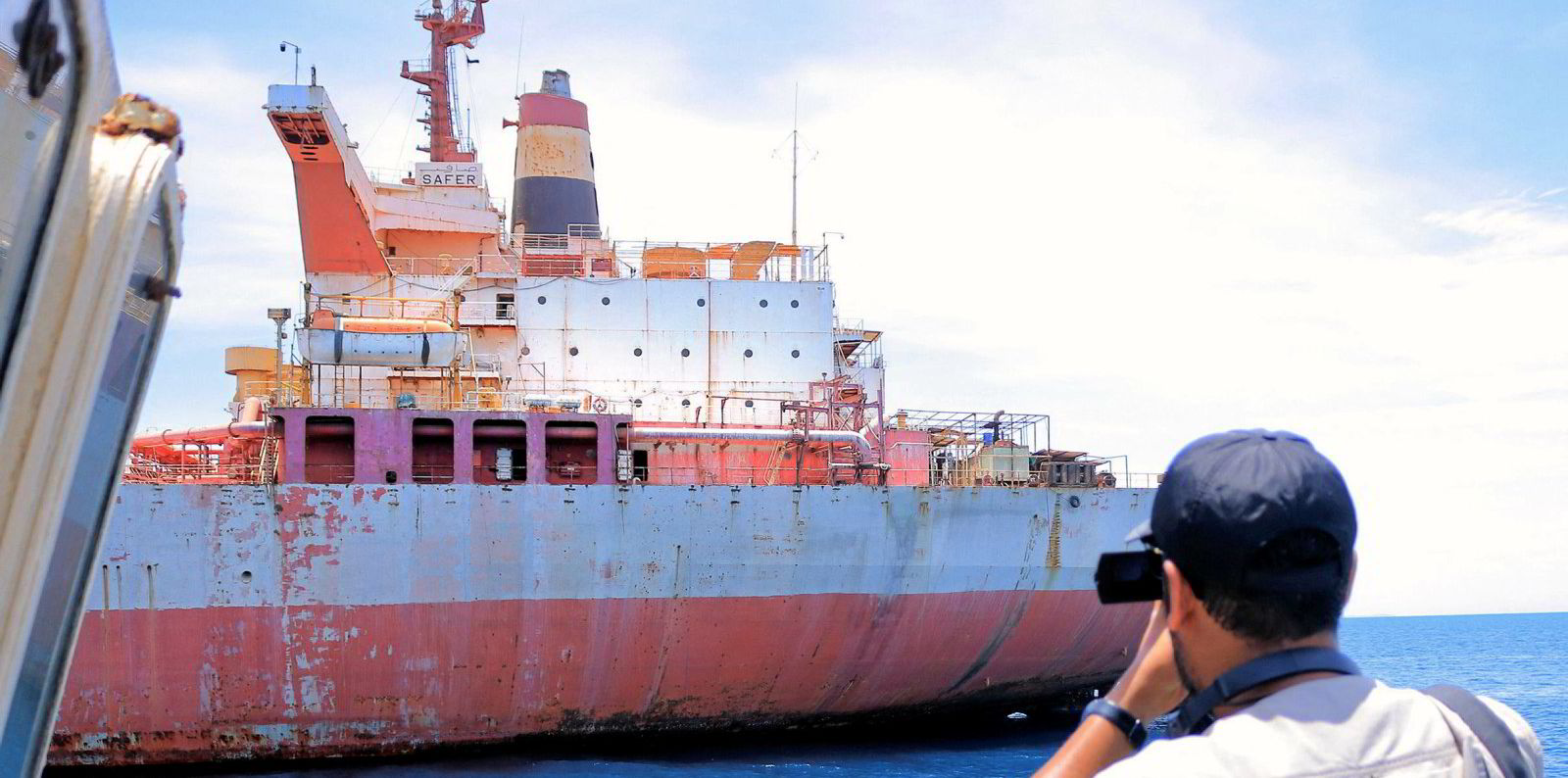Preparations to transfer more than 1.1m barrels of oil from a decaying tanker off the Yemen coast are progressing well, says the Dutch salvage team behind the operation.
Generators have been transferred to the 406,600-dwt FSO Safer (built 1976) and started pumping inert gases into oil compartments to limit the risk of an explosion.
The 99-loa Boskalis support vessel Ndeavor (built 2013) is berthed alongside the FSO Safer and engineers have built a temporary staircase between the two vessels, according to a video update posted by the company on Friday.
“Overall, the first phase of the operation, including these inspections and preparing the Safer for the ship-to-ship transfer of the oil, are progressing well,” it said.
The United Nations-backed operation will see the oil transferred to the 307,300-dwt tanker Nautica (built 2008) in the coming weeks. The Nautica remains off Djibouti after arriving a month ago following a refit in China.
It is expected to come alongside the FSO Safer in the next couple of weeks before the transfer operation, which is likely to take around 20 days. A similar amount of time will be needed to clean the vessel before it is removed for scrappage.
The FSO Safer, one of the largest vessels ever built, has not been maintained since the start of Yemen’s civil war in 2015. It is at risk of breaking up or exploding and causing an environmental and economic disaster, say officials.
If the floating storage and offloading unit spills its cargo, the UN has estimated that a clean-up operation would cost $20bn. Billions more would be lost to global trade owing to the blockage of the Bab al-Mandab strait to the Suez Canal. The UN said 17m people would be affected.
In April, the IMO asked member states to send old spill response kits, including dispersants and rapidly erected storage tanks, as the transfer operation was “complex and inherently risky”.





